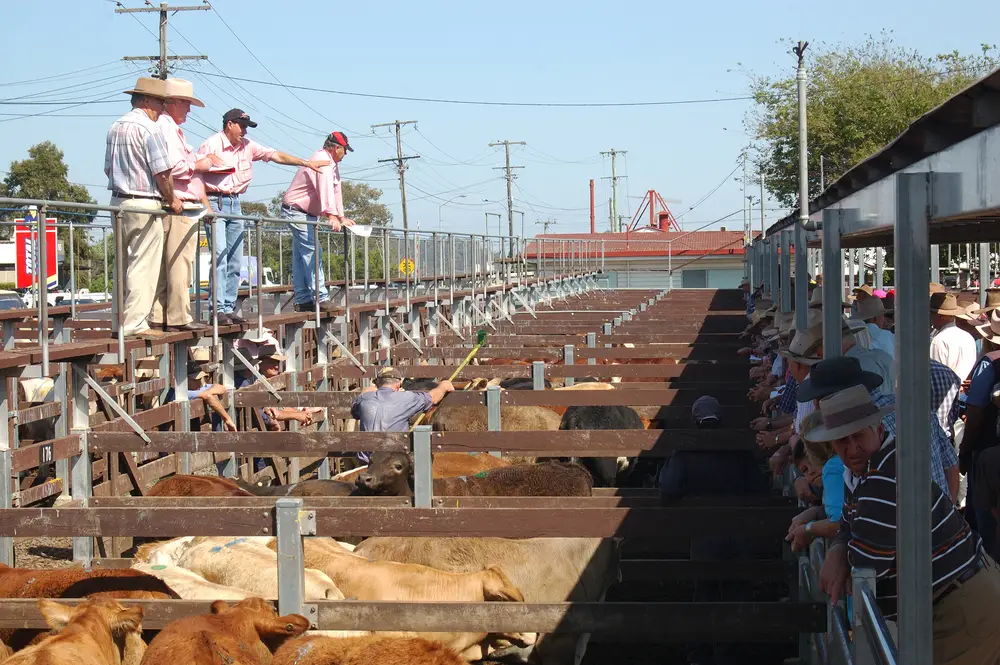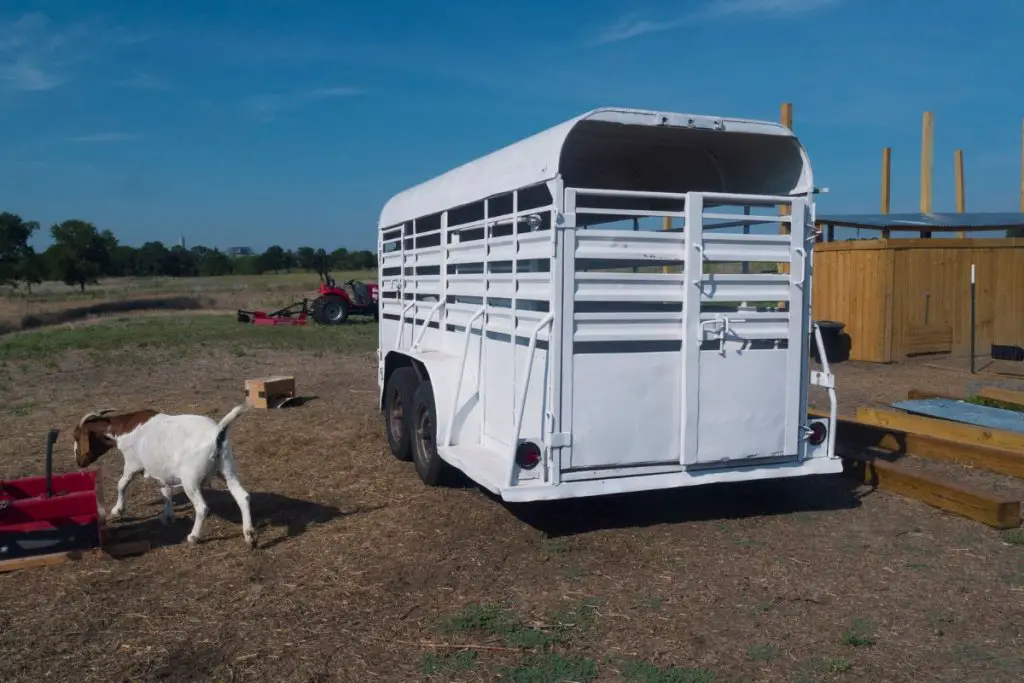If you're heading to a livestock auction for the first time, go with someone who is more experienced. Dress appropriately, get there early, bring your livestock trailer and most importantly - don't let your emotions get in the way!
This article will help you prepare and become more confident when attending your first livestock auction.
Table of Contents
First Things First
Attend two or three auctions beforehand, preferably with someone with experience buying or selling cattle.
Gen up on the many different terms you will likely hear from the auctioneer and other farmers. The USDA has eight separate categories to measure beef carcass quality.
In order of quality, from highest to lowest, they are:
- Prime
- Choice
- Select
- Standard
- Commercial
- Utility
- Cutter
- Canner.
Cutters and canners will only end up supplying meat for mince, sausages, or even pet food.
Do your background checks on market prices, including any recent events which may have raised or lowered the cost of the cattle you are targeting. Check the market reports for the auction you have chosen.
Choose your livestock market carefully and ask yourself these questions:
- Do you want a more exclusive one that may charge higher prices but offers a better standard of cattle?
- Are you looking for a cattle market with special sales and can specifically provide varieties of breeds, i.e., Angus, Charolais, and Holstein?
- Alternatively, you might prefer one that prides itself on featuring several different cattle types, i.e., steers, heifers, bulls, cows, calves, or even cow-calf combinations.
Perhaps end uses or specific ages are what you are looking for, such as feeder cattle or yearlings.
Once you have chosen your cattle auction operator, research them thoroughly on the internet, through local cattle publications, and by word of mouth. What is their record of livestock sales, and does their auction schedule fit your requirements?
At The Auction
Arrive early on sale day and take the time to wander around all the pens and carefully inspect the cattle that interest you. Arriving early also allows picking a good vantage point in the selling area.

If possible, find a place that will enable you to see the cattle entering the circle and with a clear view of the auctioneer. Consider that although your panorama may be unobscured in an empty arena, people could be blocking your lines of sight when it fills up.
Again, attending two or three auctions before you intend to buy is a great way to find that elusive spot!
Here are our best tips when attending cattle auctions:
- Keep your cool at all times. Do not get excited or show much emotion – you never know if your future rival bidders are watching!
- Dress appropriately. Smart but functional is the happy medium. Aim to blend in.
- Check your potential purchases for signs of illness or distress. Be careful if they are in the same pen as other cows that look unhealthy – their ailments could have spread.
- Ask the auctioneer for a copy of the animal’s medical and breeding history. It would be helpful to carefully note the pen number and animal characteristics like its markings or color. You don’t want to be bidding for the wrong animal!
- Be prepared to get your hands dirty. If you are successful with your bidding, you may have to get up close and personal with your purchases while preparing them for transport.
Make sure you bring your ID, book in at registration and get your buyer number well before you bid.
Keep your auction ticket with you at all times – don’t throw it away if you are leaving before the auction has finished, as someone else could pick it up and make some bids in your name.
While rare, it can happen and often by mistake.
Leave The Emotions Behind At The Farm
Again, remember your demeanor when bidding. It’s easy to get overexcited and careless when you’re in the middle of a bid. You don’t want to be an easy target because stockmen are canny operators. They will be watching your every move and looking for signs of weakness.
Keep your hands by your side unless bidding, of course. Avoid eye contact with the auctioneer and their staff as much as possible.

Don’t bid beyond your means. Be patient and remember: there will always be other auctions, and you will always have other opportunities to make your ideal purchase. If you find prices are higher than you can afford, you can consider another auction house or even private sales.
Each auctioneer is different, and the way they raise bid increments will differ too. Generally speaking, the more valuable the item, the higher the amount between each bid raise.
Transporting Your Purchases
The location of the sale barn is essential. Don’t choose one too far away if you wish to transport the animals yourself. You often have to take your purchases home with you straight after the auction finishes.
If you are the one moving the cattle, you may not be arriving home until after dark. Have you got easy-to-access pens and good lighting for a straightforward transfer from your trailer?
It is essential to have everything ready as your consignment of cattle will be skittish after transport and will be experiencing your farm environment for the first time.
Transporting cattle in your vehicles is complicated and time-consuming. You may need proper paperwork, especially if you are crossing state lines or entering tick-free zones.

Alternatively, you can leave them at the auction or maybe at a stockyard nearby for pickup later, but that will be expensive and creates extra stress levels for your cattle.
If you do not plan to move the cattle personally, the cattle sale operators will have a list of local haulers you can use. Make sure you have at least talked to the hauler before going to the auction!
Post-Auction Procedures
Don’t put your newly-purchased cattle out to pasture straightaway. They will need time to settle down and adapt to their new surroundings.
When they arrive at your farm, place them in a separate pen for about a week. Be sure not to mix them with the rest of your herd until a period of quarantine has passed. You should also call a vet to come and check their condition.
